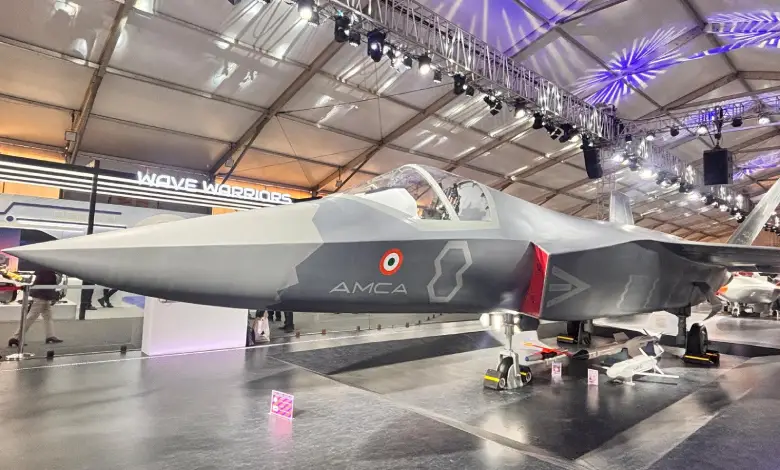
New Delhi: The Narendra Modi administration has greenlit the execution framework for the Advanced Medium Combat Aircraft (AMCA) initiative, marking a departure from traditional practices by requiring Hindustan Aeronautics Limited (HAL) to compete alongside private sector companies for the manufacturing contract. Defence Minister Rajnath Singh sanctioned this competitive approach as part of broader efforts to strengthen India’s self-reliant defence production capabilities and build a stronger domestic aerospace industry.
The Aeronautical Development Agency (ADA) will oversee program implementation through industry partnerships. According to the defence ministry’s official statement, “The Execution Model approach provides equal opportunities to both private and public sectors on a competitive basis. They can bid either independently or as joint ventures or as consortia.” The ministry emphasized that “The entity/bidder should be an Indian company compliant with the laws and regulations of the country.”
Defence establishment sources informed ThePrint that this new framework eliminates any predetermined choices, requiring all interested parties to participate in the bidding process to secure the contract.
The competitive structure represents a fundamental shift from established procedures, where HAL India’s sole fighter aircraft manufacturer would typically be the automatic selection for production, subsequently partnering with private firms for component manufacturing. Under the new model, HAL must now compete against major private corporations including TATA, Adani, L&T, and other potential participants.
Industry sources clarified that HAL retains flexibility to submit bids independently or form consortiums with private partners. Similarly, private companies can bid alone, create private sector consortiums, or collaborate with HAL.
The defence ministry announced that “ADA will shortly issue an Expression of Interest (EoI) for the AMCA Development Phase.”
According to the established timeline, officials expect India’s indigenous fifth-generation fighter prototype to debut by 2031, with mass production scheduled to begin in 2035.
“We have fixed a 10-year timeline, starting today. After the first prototype is developed, we will go in for series production, which should commence by 2035,” a source detailed.
The strategy aims to enable ADA to identify the most capable partner to accelerate development and manufacturing processes rather than relying on a single organization, sources indicated.
HAL has faced considerable criticism regarding delays in the Tejas fighter program’s development and production phases.
“For the first time, you have a private player like TATA, which has tied up with Airbus to manufacture military transport aircraft C295 in India. The private companies are supplying components for international fighters. Now, they can bid for the AMCA programme too,” the previously quoted source noted.
This announcement emerges as reports suggest China is accelerating delivery of its fifth-generation J-35A fighter aircraft to Pakistan, potentially expanding the capability disparity with the Indian Air Force (IAF). Although the IAF maintains numerical superiority in total aircraft, Pakistan operates a greater proportion of 4.5-generation fighters.
China recently revealed what it claims are two sixth-generation fighter prototypes—the Chengdu J-36 and Shenyang J-50 in December of last year.




